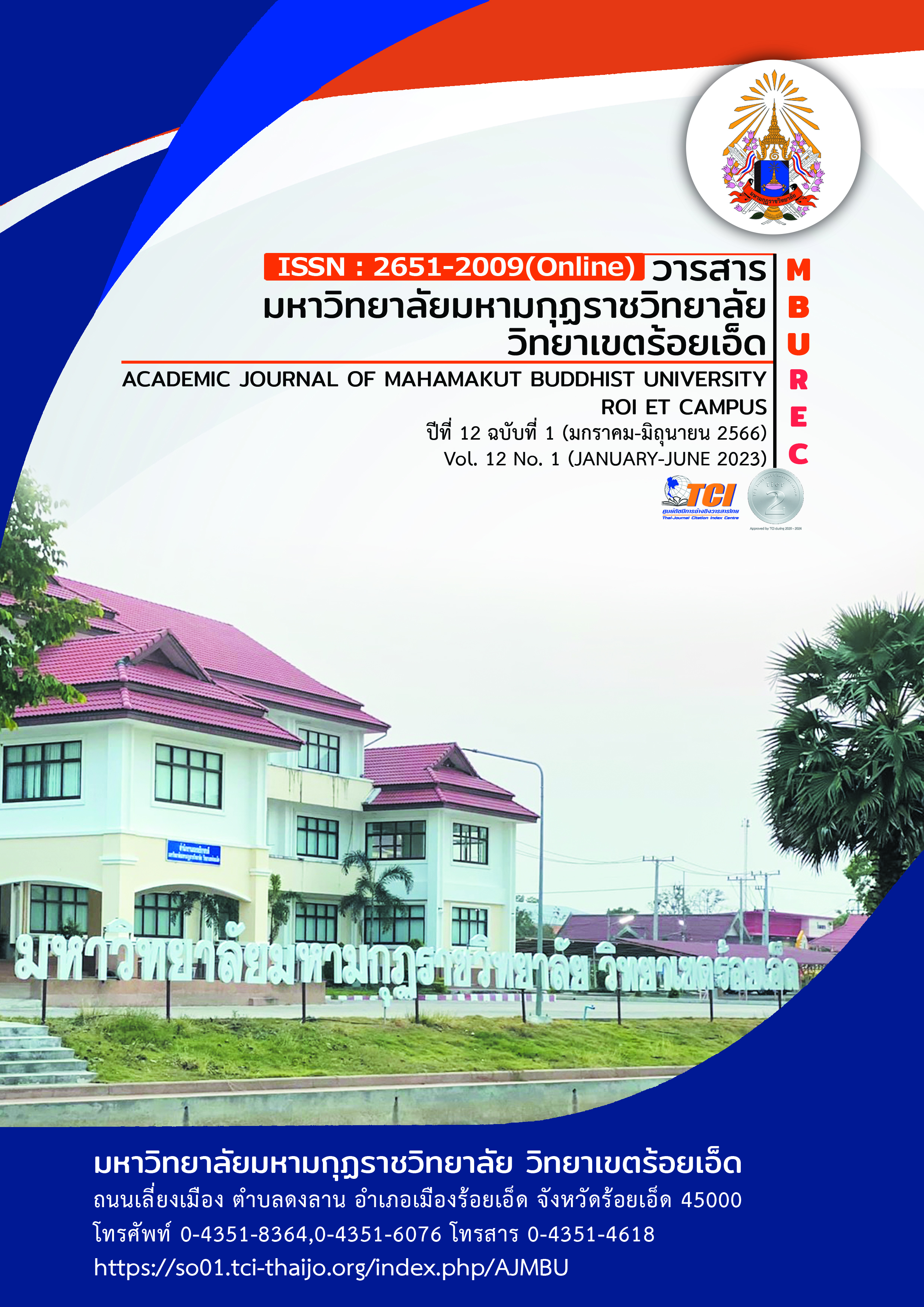THE CONSTRUCTION OF THE COMPETENCY TEST TO EXPLAIN PHENOMENA SCIENTIFICALLY FOR MATTHAYOMSUKSA 3 STUDENTS UNDER THE SECONDARY EDUCATIONAL SERVICE AREA OFFICE NONGKHAI
Main Article Content
Abstract
The purposes of this research were 1) to construct and assess the quality of the competency test to explain phenomena scientifically. 2)to construct a norm of scores from the competency test to explain phenomena scientifically. 3)to construct a manual for using the competency test to explain phenomena scientifically. The sample consisted of 601 Matthayomsuksa 3 students under the Secondary Educational Service Area Office Nongkhai in the second semester of the 2021 academic year selected by multi-stage random sampling. The samples were divided into two groups: the first group of 150 students assessed the difficulty and discrimination of the test, and the second group of 451 students confirmed the quality of the test. The research instrument was the competency test to explain phenomena scientifically.
The findings of this research were as follows:1.The construction of the competency test to explain phenomena scientifically is a situational test, and the test was the multiple-choice with four options. The value of the Index of Item Objective Congruence (IOC) was between 0.60 - 1.00. The difficulty value of the items and the value of the discrimination were between 0.55-0.77 and 0.20-0.39 respectively. The reliability of the test which was calculated by the Kuder-Richardson Formula 20 (KR-20) was at 0.76.2.The norm for interpreting scores of the competency test to explain phenomena scientifically consisted of six levels: very good, good, fair, medium, low and should be developed. The normalized T – Score ranges from T5 to T73.3. The manual for using the competency test to explain phenomena scientifically was suitable and included all the important components. The examination of the manual validity by five experts had a Content Validity Index (CVI) of 0.88.
Article Details

This work is licensed under a Creative Commons Attribution-NonCommercial-NoDerivatives 4.0 International License.
References
กระทรวงศึกษาธิการ. (2560). แผนการศึกษาแห่งชาติ พ.ศ. 2560–2579. กรุงเทพมหานคร : สำนักงานเลขาธิการสภาการศึกษา กระทรวงศึกษาธิการ.
กิติยาภรณ์ สุปะทัง. (2560). การสร้างแบบวัดการรู้เรื่องวิทยาศาสตร์ของนักเรียนระดับชั้นมัธยมศึกษาปีที่ 3. วิทยานิพนธ์ปริญญาศึกษาศาสตรมหาบัณฑิต สาขาวิชาวิจัยและ ประเมินผลการศึกษา. บัณฑิตวิทยาลัย : มหาวิทยาลัยมหาสารคาม.
นัฐพร ตื้อจันดา. (2551). การสร้างแบบวัดทักษะกระบวนการทางวิทยาศาสตร์สำหรับนักเรียนชั้นประถมศึกษาปีที่ 6. วิทยานิพนธ์ปริญญาศึกษาศาสตรมหาบัณฑิต สาขาวิชาวิจัยและประเมินผลการศึกษา. บัณฑิตวิทยาลัย : มหาวิทยาลัยเชียงใหม่.
บุญชม ศรีสะอาด. (2540). การวิจัยทางการวัดผลและประเมินผล. กรุงเทพมหานคร : สุวีริยาสาสน์.
ประนอม บัวแก้ว. (2560). การพัฒนาแบบวัดทักษะการรู้เรื่องวิทยาศาสตร์สำหรับนักเรียนชั้นมัธยมศึกษาปีที่ 3. วิทยานิพนธ์ปริญญาครุศาสตรมหาบัณฑิต สาขาวิชาวิจัยและประเมินผลการศึกษา. บัณฑิตวิทยาลัย : มหาวิทยาลัยราชภัฎสกลนคร.
เยาวดี รางชัยกุล วิบูลยศ์รี. (2554). การประเมินโครงการ : แนวคิดและแนวปฏิบัติ. กรุงเทพมหานคร : จุฬาลงกรณ์มหาวิทยาลัย.
สุภมาส อังศุโชติ สมถวิล วิจิตรวรรณา และรัชนีกูล ภิญโญภานุวัฒน์. (2557). สถิติวิเคราะห์สำหรับการวิจัยทางสังคมศาสตร์และพฤติกรรมศาสตร์ : เทคนิคการใช้โปรแกรม LISREL. กรุงเทพมหานคร : เจริญดีมั่นคงการพิมพ์.
วิริยา บุญชัย (2529). การทดสอบและวัดผลทางพลศึกษา. พิมพ์ครั้งที่ 2. กรุงเทพมหานคร : ไทยวัฒนาพานิช.
สำนักงานส่งเสริมการสอนวิทยาศาสตร์และเทคโนโลยี. (2561). หนังสือเรียนวิชาวิทยาศาสตร์ ชั้นมัธยมศึกษาปีที่ 3 ปีที่ 1 เล่ม 1. กรุงเทพมหานคร : คุรุสภาลาดพร้าว.
สุนีย์ คล้ายนิล. (2556). ความรู้และสมรรถนะทางวิทยาศาสตร์ สำหรับโลกวันพรุ่งนี้. กรุงเทพมหานคร : สถาบันส่งเสริมการสอนวิทยาศาสตร์และเทคโนโลยี.
Davis. (1992). Review of Aegean Prehistory I: The Islands of the Aegean. American Journal of Archaeology. 96. 699-756.


